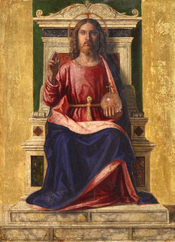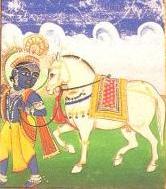World to come
| Part of a series on |
| Salvation in Christianity |
|---|
 |
| General concepts |
| Particular concepts |
| Punishment |
| Reward |
The world to come, age to come, heaven on Earth, and the
The concept is related to but differs from the concepts of heaven or the afterlife in that heaven is another place or state of existence generally seen as above the world, and the afterlife is generally an individual's continued existence after death.[citation needed]
The following section reviews religions chronologically by date of the composition of various religious texts, from oldest to most recent, although the chronology of ancient religions is not known with certainty. Later dates are more certain than earlier dates.
Zoroastrian eschatology
This section relies largely or entirely on a single source. (January 2021) |
In
Jewish eschatology
HaOlam HaBa (העולם הבא) or
According to the Talmud, any non-Jew who lives according to the Seven Laws of Noah is regarded as a "righteous gentile", and is assured of a place in the world to come, the final reward of the righteous.[3][4]
There is much
Christian eschatology
In Christianity, the phrase is found in the
Hindu eschatology

In Hindu eschatology the current age is the
There have been a range of dates predicted, purportedly from different methods of calculation.
The earliest copies of the Mahabharata that exist dates from 200 CE and is the first text to mention Kalki but was likely written in its final form around 400 CE. Kalki is also mentioned in the Vishnu Purana which has a contested date of composition ranging from 400 BCE to 1000 CE.
Islamic eschatology
Both Sunni Islam and Shia Twelve Imams beliefs hold that before the Last Judgment, the Mahdi and Jesus appears and defeats the Antichrist False Messiah (Al-Masih ad-Dajjal). His rule will be paradise on Earth, which will last for seventy years until his death, though other traditions state 7, 19, or 309 years.[9]
See also
- Messiah
- Messianism
- New world order (Baháʼí)
- Otherworld
- Possible world
- Problem of evil
- Technological singularity
References
- ^ Livius
- ^ Jews are told to live their lives on earth to the full, as their bodies will stay there but their souls live on. Jewish Afterlife Beliefs at SimpleToRemember.com
- ^ Mishneh Torah, Hilkhot M'lakhim 8:11
- ^ Encyclopedia Talmudit (Hebrew edition, Israel, 5741/1981, entry Ben Noah, end of article); note the variant reading of Maimonides and the references in the footnote
- ^ Ginzberg, Louis (1909). "Chapter I: The Creation of the World". The Sacred Texts: Legends of the Jews.
- ^ "The Nicene Creed". Christian-bible.com. Retrieved 2012-01-08.
- ^ a b Chandra, Suresh (Aug 15, 2012). Encyclopaedia of Hindu Gods and Goddesses. Kindle Edition.
- ^ Santanu Acharya. "Hindu Prophecies: Translations from the Kalki Purana". Ww-iii.tripod.com. Retrieved 2013-01-20.
- ^ "How long will the Imam of Time, Imam Mahdi (AS), will this world rule after he reappears?".
